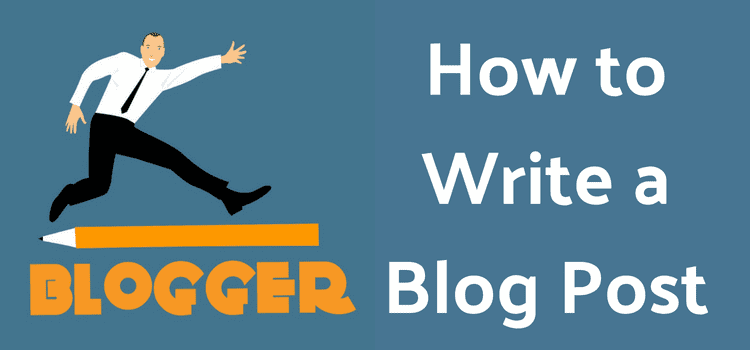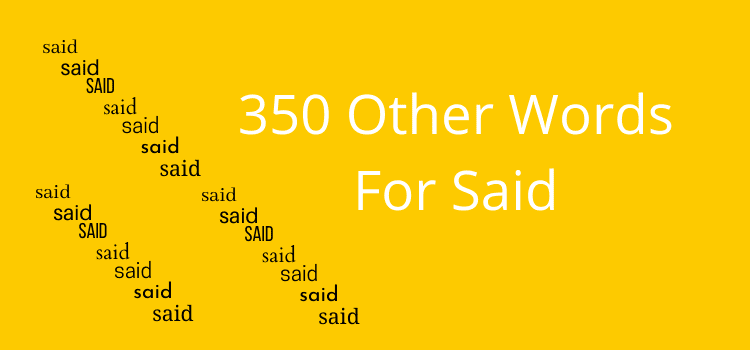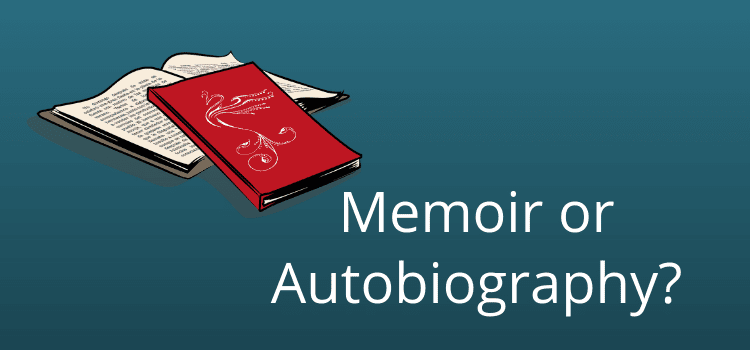
Your content might be fantastic, but learning how to write a blog post is more about how you present your information to your potential readers.
Sure, your writing skills are vital, and so is your writing style. But you need to connect with people very quickly through your words.
When you start a blog, you, like many bloggers, probably think that writing blog posts and tons of them will result in lots of search engine traffic.
Yes, you will undoubtedly get some search results, but successful blogs get a mountain of organic traffic every day.
Key features of a blog
If you are only getting traffic from friends and family, it is time to make some changes.
An excellent blog concentrates on a niche topic.
Your blog topic can be anything you like, but stay laser-focused on your subject.
Wandering off on unrelated themes or ideas will confuse your readers.
For instance, if your blog is about growing and caring for roses, don’t wander off to petunias and recipes.
Choosing a topic for your blog that is strictly defined will allow you to become an expert.
Blog readers love experts on a topic.
They will return over and over again if they know you are a reliable source of sound advice.
If you are already on-topic with all your posts, and traffic is still disappointing, it might be about how your blog posts look and read on-screen.
Here are some tips to help you improve your blog.
What’s the difference between a blog post and a great blog post?
Sometimes it can be as simple as the decisions you make when you create a blog.
Your choice of theme can make a huge difference.
Dark, deep, and mysterious are not visual qualities for a blog.
Nor are annoying pop-ups, overlays, and, well, anything that flashes, blinks or slides.
All of these interrupt reading.
Successful blogs and websites are almost always light, clean, easy to read, and full of white space.
In other words, a great blog should be of high quality and be pleasing to the eye.
Writing great content takes a long time.
But it can be time wasted if readers find it difficult or uncomfortable to read your post.
Ease of reading is particularly important for smartphone and tablet readers.
On top of that, they need space on a web page for their thumbs to scroll as they read.
If readers are not engaged, they will leave after only a few seconds.
Then your blog will suffer from a high bounce rate, negatively affecting your SEO and Google search ranking.
How can you keep your readers interest?
Your choice of fonts, font size, and color

Check your blog theme and look for changes you can make to your typography to make it more readable.
Sans serif fonts are much easier to read on a screen. I use Raleway as my default font and dark grey for text.
But for headings, I change to black.
Serif fonts are not as pleasing and are more suited to old-fashioned printed newspapers.
Black is often a default setting on blogs, but it can become a strain on readers’ eyes.
Fancy fonts and colors might seem like fun but are not suitable for a serious read.
Check the size of your fonts by viewing your blog on your phone.
Is your text too small?
Is your text too big?
What do you want your choice of font to say about you?
Avoid white text on a dark background whenever possible. It is too difficult to read.
Auto settings for bullet points can also cause problems with font size and line spacing.
- Check your font.
- Check the line space.
- Is the paragraph setting different?
It is often better to manually create bullet points to fix the problem.
1. Now, I have my default font.
2. Now, my line space is better.
3. I can set the indent to where I want.
You might be able to change your typography settings, but you could also consider changing your theme if you want to have more control and choice.
Create blog posts that are easy to read

When you sit down to write blog posts, get your words down in either a word processor or your blog editor.
Concentrate on your content, blog post ideas, or any calls to action you need to include.
After you finish writing, take a look at the text you’ve written.
If it looks like this, you have some work to do.
It is probably in large chunky paragraphs that are full of long sentences that are not easy to read because readers can lose track of where their eyes are in the text, which is not good at all for comprehension. Paragraphs should be avoided and instead replaced by single sentences, or at the most, two short sentences that will make reading and understanding much easier and give you a better chance of getting your message across to your readers. As a blogger, you want to build trust with your readers, and you can only do that if you are giving them valuable information, which, however, might not happen if they have difficulty reading and understanding that what you have to say is really important and can solve a problem for them. Clearly, you have some work to do before you can publish your article. You should also avoid using full justification, as it tends to create weird word spacing that can be disconcerting to read. Use left justification, and your text will flow naturally with natural word space.
Paragraphs like the one above are very difficult to read on a screen. But it is easy to fix.
Short paragraphs
Look at each sentence and reduce any that are long. You can always do this by chopping a sentence up into shorter pieces.
You might also want to reorder them for better understanding.
Then add line breaks to space out the sentences.
For example:
Your article is full of chunky paragraphs. Many sentences are too long, so they are not very easy to read.
Readers can lose track. So you should shorten your sentences for better comprehension.
Try not to use more than two sentences together.
You should left justify your text because it will create natural word space. Fully justified adds weird spaces between words, so it looks ugly.
You want to build trust with your readers with your knowledge.
But you can only do this if they can read and understand that you really can solve a problem for them.
Using short paragraphs is one of the key features of good blog writing. When you have finished adding space, your first draft is ready.
Now it is time to go through your editing and proofreading routine before hitting publish.
I always use a grammar checker at this stage.
Some online writing checkers can also give you a Flesch–Kincaid readability score.
It is an important SEO (search engine optimization) factor, and you should aim for a score at the right level for your target readers.
After a couple of careful proofreads, you are almost ready to turn your perfect text into a great post.
Every post needs images
When you write a great blog post, it is about delivering your message to your target audience.
Every post you write should have a featured image at the head.
It gives a reader an instant first impression of what your article is about and should attract their interest.
Of equal importance is that your featured image will appear on social media and be the hook to gain a reader’s attention.
On social networks, people click images, so perhaps give them an image to click.
Within your article, any time you notice that your text is running on for more than fifty or sixty lines, you need to give it a break.
Inserting headings is the quickest and easiest way to break up a long text.
Using H2 and H3 headings is also good practice for on-page SEO.
Your headings help a reader navigate your text better by highlighting important information.
Images can do the same but can also give a short period of relief for your readers’ eyes.

Create a mood
You can create a little mood within your content by adding images that tell a bit of your story. Adding space before and after an image is sometimes a good idea too.
Feel free to express yourself a little.
Select images that suit the look of your blog, and always resize them to fit your theme format.
Standardizing your image sizes is also a good idea because it adds uniformity and appeal.
But make sure you have the necessary rights or permission for all images you use.
If you have Google Adsense on your blog, another way to break up your text is with native ads.
You can style these ads to the same or very similar typography as your blog.
You can insert them in appropriate places, similar to how you would decide to add an image.
Take the time to do a short step-by-step audit of your blog
Excellent blog writing is all about the way you present your words to your readers. You want to make it a pleasure for them to read and enjoy.
Before you start writing your next post or content marketing article, look at your blog, and think about what improvements you could make.
You could get some ideas and inspiration by checking out popular bloggers such as Neil Patel or Harsh Agrawal.
Both of them have different yet appealing tastes in blog design.
Ideas for your blog audit

1. Look at your theme, honestly
Have you used the same one for years? If so, there’s a chance that it might be outdated or slow to load.
Why not investigate new themes and see if you can make your blog look much better?
New themes can also give you faster page loading as well as more up-to-date options, especially with premium themes.
If you don’t have a responsive site or access to Google Fonts with your current theme, it is time to make a change.
2. Select your fonts, size, and colors
In most modern themes, you can change all of your default font settings for every style you use in your blog.
You can even style your comment sections to make them more appealing.
Try different combinations or copy styles from sites that you like.
When you think you have made good choices, don’t forget to check what your text looks like on your phone and tablet.
3. Check your existing posts
When you change your theme or fonts, your old posts are going to look different too. Check that everything looks good.
There might be a few small issues you need to correct because of your previous formatting.
If you are using WordPress, a Sandbox is a huge advantage for major theme changes.
4. Refresh your old content
Your existing posts are a potential goldmine.
Before you start writing a lot of new content, think about updating your old content with better text layout and spacing and adding some images.
It is a quick way to turn a good blog post into a fantastic one.
5. Eliminate unnecessary distractions
Do you really need a sidebar?
It is one part of a blog that can get overcrowded with useless bits and pieces.
Do a stocktake of your sidebar. If a widget is not there to increase your page views or make money, remove it.
Remember that sidebars only appear after your post and comments on a phone, so it is not of great value there.
But you might want to keep it for desktop readers. But again, style it to look great.
Blog writing tips

Let’s look at how to write a blog post that people can read quickly.
Blog readers are not going to read your blog posts and articles like a book.
They will skim, scan, scroll, and only absorb the information they want or need.
It’s rapid-fire reading that requires a different writing technique and style to create a great post.
Forget all you know about paragraphs
Long paragraphs are difficult to read.
So, edit your long seven-sentence paragraphs in your blog content that your writing teacher told you were perfect.
Long passages of text with no space require a lot of concentration to read. Readers on mobile phones especially have no patience for that.
Successful blogs remove paragraphs and replace them with a maximum of one medium sentence or two to three concise sentences.
White space is vital for reading ease. So go easy on your blog readers.
Short and sweet
When you write a post, keep your sentences short. Very short. In fact, you can even use sentence fragments.
Again, this is to accommodate the reading style a lot of people use online. They want information, and they want it quickly.
Don’t write this.
What you need to do is ask someone nicely if they can possibly assist you in proofreading your writing.
Write this instead.
You need to get a proofreader.
Give your blog readers visual guides
The best way to do this is to use bold headings that give a clear basic outline of the text that follows.
In a way, these become paragraph markers for your readers.
Similar to your post title, clear headings allow readers to navigate quickly to a part of a text that interests them.
Often this could be the search topic they used to find your blog post.
So you are helping your readers find the answer to their questions as quickly as possible.
It doesn’t mean that they will leave immediately, though.
If you can guide a reader to what they are looking for, there is a very good chance they will value your blog as a great resource and continue on your site to discover more or perhaps bookmark it.
Should you or shouldn’t you contract?
Writers know that contracting in formal writing is frowned upon. But in blog writing, you can use both. However, try not to mix the two styles.
If you’re after a relaxed, personal writing style, then don’t be afraid to contract all the time for your readers. They’ll love it.
But if you want to keep to a neutral or semi-formal writing style, that is fine, and your readers will also be happy and grow to like how you write.
The main feature of a high-quality blog is consistency. Keep to your blog writing voice, and your readers will get to know you through your writing style.
Do you need an introduction and conclusion?
Perhaps not.
What is essential is to get to the nitty-gritty of your blog post immediately.
Don’t waste your reader’s time with a lengthy introduction that gives them very little information.
A great blog post goes straight into the topic.
If your article is about the use of commas, start writing about how to use commas more accurately in your first sentence.
The same applies to a conclusion. Is it worth repeating what you have already said? Probably not.
But you might use a question in finishing to encourage readers to leave a comment.
Using a bold conclusion heading can be useful, however. Just make sure that it contains concise decisions or a call to action and is very short.
There is no defined introduction, middle, and conclusion in blog writing.
Only useful or entertaining information that will encourage your blog visitors to read the post.
Oops, a typo or two
There is one thing that can lose blog readers in a hurry. Typos and mistakes.
Grammar errors, spelling mistakes, and typos stand out far more in a blog post than in a book because the text is in so much white space.
Because of the use of short sentences with no real paragraphs in blog writing, errors stand out much more vividly.
Take extra care when proofreading anything you post online.
But be especially careful with your blog posts and articles before hitting publish. Make sure it is perfect.
How long is long or short?
The ideal length of a blog post depends on a lot of things.
If you are primarily looking for organic search traffic or content marketing, search engines and Google, particularly, seem to give ranking preference to long-form articles.
The right content length, in this case, could be between 1,000 and 1,500 words.
Some pro bloggers are now moving to even longer posts of around 5,000 words by combining their existing blog articles.
However, long-form articles can stretch an online reader’s attention span too far. It means that they might only read part of the article, get bored, and then leave.
In this case, you can improve your retention by using internal links between sections of your articles.
But you might find that articles of 500 to 800 words work far better for you.
My rule is simple. When I sit down to write a blog post, I know I am certainly not going to write a book chapter.
But I want to cover the topic thoroughly. Generally, this means between 800 and 1500 words.
One lesser-known fact about blogs is that your comments section adds to your word count. This is very good for ongoing SEO. So always allow and encourage comments on your articles.
If you are thinking about starting a blog, try writing a few new blog posts.
Then ask your friends and family to read them on their phones and get their real-life feedback.
Then you can start building and writing your new blog with readers in mind.
Summary
It doesn’t take much work at all to learn how to write a blog post and make it easy to read and look great.
Check your theme and your typography settings first.
Then, the next time you write a post, make sure you keep your sentences short and allow plenty of white space for your readers.
Lastly, add images to your new articles.
Now you know how to write a blog post and present it beautifully. Your readers will love you for it.
Online blog readers are busy people who want what they want now.
For writers who are keen to learn how to create a blog that will gain the maximum amount of attention, there are only five key rules for preparing a good blog article.
1. Select your blog post ideas carefully.
2. Style your writing to be very easy to read.
3. Design your blog so it is very easy to navigate.
4. Give your blog readers images.
5. And most importantly, give them plenty of white space.
Related reading: How To Write An Advice Article To Gain More New Readers




I am binge reading your Blogs. I have just started a daily blog site that we hope to make a full time income.
I will be back to read more of your Blogs.
Bless you
Excellent stuff. Thank you. My blog had to be easy on the eyes. Pure and simple. I created a white background with black letters. Simple as that. I did not want my readers to search for their reading glasses.
Pictures are a must as well as small sentences. If the majority are like me, their time is limited. I have about an hour every morning that I use to reading certain blogs and catching up before I start the day. I keyed towards people like me.
My word count on average is under 800. Sometimes I will write something that requires a little more, but that’s rare.
I’m glad you did this. I’m still pretty new. I started mine in February. It’s a lot of fun and I’ve met the best people in the world. I do know one thing: I’ll never stop learning.
Thanks!